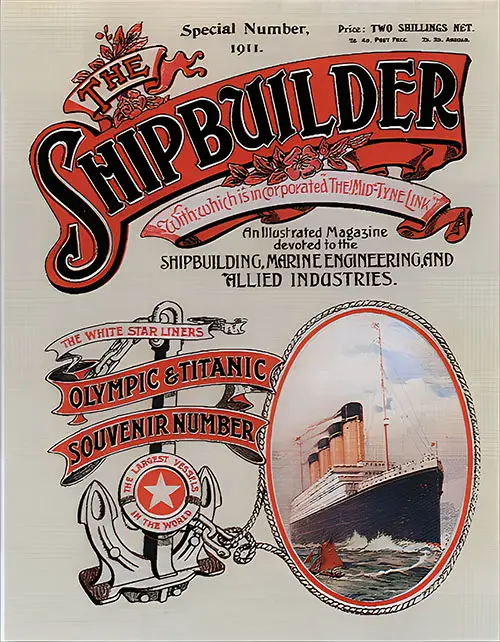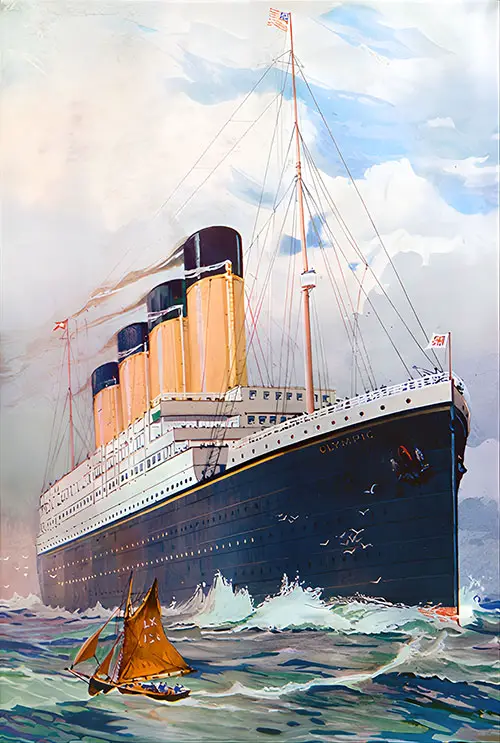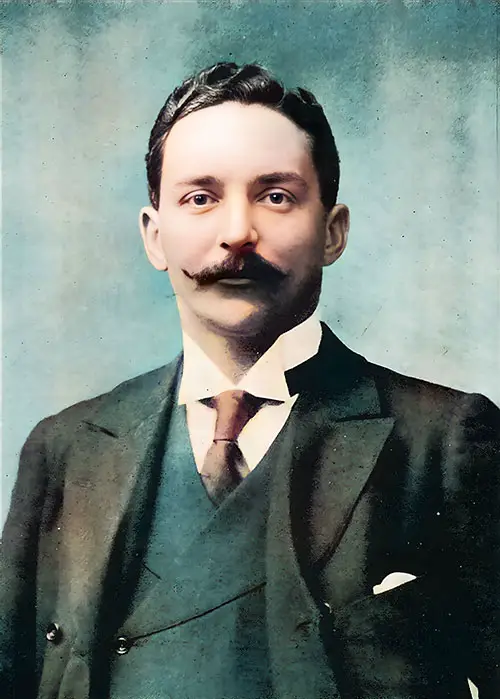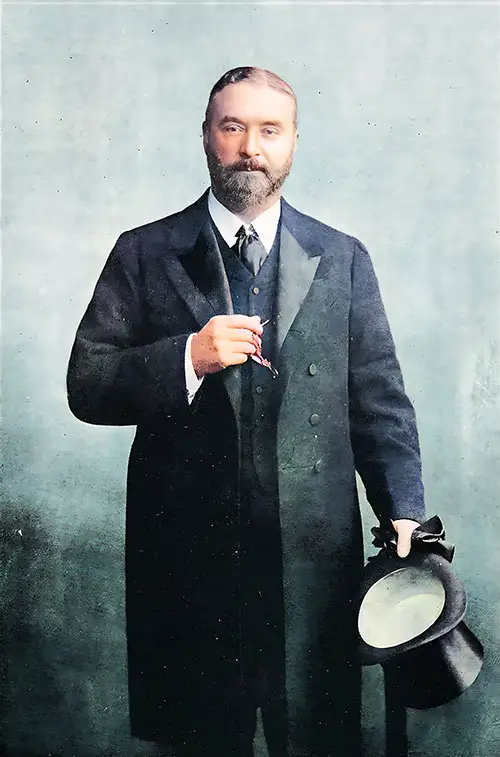Titanic’s Engineering Origins: The White Star Line and the Making of a Maritime Giant
📌 Explore the origins of the RMS Titanic through The Shipbuilder’s 1911 special issue. Learn about White Star Line’s innovations, the construction of Olympic & Titanic, and the engineering marvels behind these legendary ships. A must-read for maritime historians, educators, and students.
Images Pertaining to the Titanic Disaster or Its Aftermath, Published in the Shipbuilder - a Quarterly Magazine Devoted to the Shipbuilding, Marine Engineering, and Allied Industries, This page is a brief introduction to the White Star Line in General.
Table of Contents of The Shipbuilder Special Issue
1️⃣ Brief Introduction to the White Star Line (This Page)
2️⃣ Harland and Wolff, Shipbuilders
3️⃣ Building the Hulls of Olympic and Titanic
4️⃣ Propelling Machinery
5️⃣ Refrigeration
6️⃣ Passenger Accommodations
7️⃣ Electrical Equipment
8️⃣ Working Arrangements
9️⃣ Olympic Sea Trials
🔟 Olympic and Titanic Special Design Plates
Introduction: A Unique Look at Titanic’s Engineering & Origins 🏗️🚢
Unlike many Titanic-related historical materials that focus on the disaster itself, The Shipbuilder’s 1911 special issue provides a fascinating pre-tragedy perspective on Titanic and Olympic as engineering marvels. This issue covers the shipbuilding process, technical advancements, and White Star’s design philosophy, making it an invaluable resource for educators, students, maritime historians, and genealogists.
This publication offers an inside look at how these legendary ships were constructed, their advanced technology, and the vision behind them—long before Titanic's fateful voyage.

Front Cover, The Shipbuilder White Star Liners Olympic & Titanic Souvenir Number, Special Number - Summer 1911. GGA Image ID # 10dc5b55a7

The White Star Triple-Screw Steamship Olympic. The Largest Vessel in the World. The Shipbuilder, Midsummer 1911. GGA Image ID # 10b1cffb14

Mr. J. Bruce Ismay, Chairman and Managing Director of the White Star Line. The Shipbuilder, Midsummer 1911. GGA Image ID # 10b1ec3dc2

The Late Mr. Thomas H. Ismay, Founder of the White Star Line. The Shipbuilder, Midsummer 1911. GGA Image ID # 10b1ecab71
Fig. 2: Diagram Showing Development in Size of White Star Liners. Diagram Showing Comparative Sizes of Various Types of White Star Steamers From 1871 to the Present Time. The Lengths of the Shown on the Diagram are Taken from Taffrail to Fore-Edge of Stem. Ships illustrated (l to r): Oceanic-Baltic-Republic (1871), Tropic-Asiatic (1871), Adriatic-Celtic1872), Belgic-Gaelic (1873), Britannic-Germanic (1874), Arabic-Coptic (1881), Ionic-Doric (1883), Belgic-Gaelic (1885), Cufic-Runic (1888), Teutonic-Majestic (1889), Nomadic-Tauric (1891), Bovic (1892), Gothic (1893), Cevic (1893), Georgic (1895), Delphic (1897), Cymric (1898), Afric-Medic-Persic-Runic-Suevic (1899), Oceanic (1899), Celtic-Cedric (1901), Athenic-Corinthic-Ionic (1901), Arabic (1903), Romanic (1903), Cretic (1903), Canopic (1903), Cufic-Tropic (1904), Baltic (1904), Adriatic (1907), Laurentic (1909), Olympic-Titanic (1910). The Shipbuilder, Midsummer 1911. GGA Image ID # 10b1f5601e. Click to View a Larger Image.
The White Star Line - Nuts and Bolts
The White Star Line, or more correctly, the Oceanic Steam Navigation Co., Limited, was boldly founded in 1869 by the late Mr. Thomas Henry Ismay, a visionary, who was later joined by the late Mr. William Imrie in the following year.
An order was immediately placed with Messrs. Harland and Wolff to construct a fleet of Atlantic passenger steamers, thus forging a connection between the Line and the famous Queen’s Island firm, a partnership that has stood the test of time and continues to this day. The pioneer steamship of the White Star Line— the first Oceanic—was 420ft. by 41ft. by 31ft., with a tonnage of 3,707.
Her propelling machinery was a marvel of its time, consisting of two sets of four-cylinder compound engines working on a single shaft and taking steam at 65lb—pressure from 12 boilers. The speed of this vessel was about 14 knots on a coal consumption of about 65 tons per day, a feat of engineering that was ahead of its time.
If space permitted, a very interesting chapter could be written concerning the notable ships built for the Line during the over half a century that has elapsed since the advent of the first Oceanic. It is not too much to say that each, in turn, has represented the highest achievement in naval architecture for the requirements in view.
As of 1923, the Line owned a total of 28 vessels, with a combined gross weight of 458,186 tons. This impressive fleet included the Majestic (56,551 tons), Olympic (46,439 tons), and Homeric (34,356 tons).
Mr. Harold A. Sanderson succeeded J. Bruce Ismay as Chairman of the White Star Line in 1913.
Key Highlights and Most Engaging Content
1️⃣ Brief Introduction to the White Star Line 🚢
🔹 Covers the origin and expansion of the White Star Line, founded by Thomas Henry Ismay in 1869.
🔹 Discusses White Star’s longstanding partnership with Harland & Wolff, which led to the creation of some of the most iconic ships in history.
🔹 Explains White Star’s philosophy of prioritizing luxury and comfort over speed, contrasting it with rivals like Cunard.
2️⃣ Harland and Wolff, Shipbuilders 🏗️
🔹 Provides insight into Harland & Wolff’s shipyard in Belfast, which was one of the most advanced shipbuilding facilities of its time.
🔹 Covers the design and construction techniques used in White Star’s greatest ships.
3️⃣ Building the Hulls of Olympic and Titanic 🔨
🔹 Details how the Titanic’s hull was built using a double-bottom structure for added safety.
🔹 Describes riveting techniques and steel reinforcement, crucial for understanding why Titanic was considered "practically unsinkable."
4️⃣ Propelling Machinery ⚙️💨
🔹 Explains Titanic’s triple-screw propulsion system, which combined two massive reciprocating engines with a center turbine.
🔹 Discusses coal consumption, steam pressure, and engine room operations—great for engineering students and maritime historians.
5️⃣ Refrigeration ❄️
🔹 Highlights the advanced cold storage system that preserved perishable goods for first-class dining.
🔹 Details how refrigeration was a key feature on transatlantic liners, ensuring the highest standards for food and drink.
6️⃣ Passenger Accommodations 🏛️
Provides a luxury tour of Titanic and Olympic’s first-class amenities, including:
🏰 The Grand Staircase
🍽️ The lavish dining saloons
🎻 First-class lounges and smoking rooms
Also covers second- and third-class accommodations, showcasing Titanic’s improvements over Olympic.
7️⃣ Electrical Equipment ⚡
Discusses Titanic’s state-of-the-art electrical system, including:
🔹 Dynamo generators
🔹 Electric lighting throughout the ship
🔹 Wireless telegraphy used for communication and navigation
8️⃣ Working Arrangements 👨🔧
🔹 Details how Titanic’s crew operated the ship, from engineering staff to deck officers.
🔹 Describes the responsibilities of engineers, stokers, electricians, and stewards.
9️⃣ Olympic Sea Trials 🌊
🔹 Covers Olympic’s sea trials in 1911, which were nearly identical to Titanic’s.
🔹 Provides insight into how the ship’s speed, maneuverability, and safety features were tested before service.
🔟 Olympic and Titanic Special Design Plates 📐
🔹 Includes detailed blueprints and diagrams of Olympic and Titanic.
🔹 Essential for naval architecture students, historians, and maritime enthusiasts.
Relevance for Teachers, Students, Historians, and Genealogists 📚
👩🏫 Teachers & Students:
🔹 A primary source for maritime and engineering studies, offering original technical descriptions of Titanic and Olympic.
🔹 Helps students analyze the differences between Titanic’s planned safety features vs. what actually happened.
🔹 Great for business studies on White Star’s luxury-first philosophy vs. Cunard’s speed-first approach.
📜 Historians & Maritime Enthusiasts:
🔹 An essential resource for studying pre-disaster perceptions of Titanic and Olympic.
🔹 Offers valuable insight into how ships were designed before stricter post-Titanic safety regulations.
🧬 Genealogists & Family Historians:
🔹 Provides historical context for ancestors who worked for White Star or Harland & Wolff.
🔹 Offers details on shipbuilding roles, crew duties, and accommodations, which could help in researching Titanic’s crew and passengers.
Noteworthy Images and Their Significance 🖼️
🔹 "The White Star Triple-Screw Steamship Olympic – The Largest Vessel in the World"
📌 Significance: Olympic was Titanic’s direct predecessor, offering a glimpse into Titanic’s design, technology, and layout.
🔹 "Diagram Showing Development in Size of White Star Liners (1871-1911)"
📌 Significance: A fantastic visual representation of how ships evolved in size, luxury, and engineering over 40 years.
🔹 "J. Bruce Ismay, Chairman and Managing Director of White Star Line"
📌 Significance: A key figure in Titanic’s story, this image presents Ismay before the disaster changed public perception of him forever.
🔹 "The Late Mr. Thomas H. Ismay, Founder of White Star Line"
📌 Significance: Highlights how Titanic’s legacy began decades before her construction.
Encouragement for Students: Essay & Research Topics 📝
💡 Looking for Essay Ideas?
🔹 How did White Star Line’s shipbuilding innovations shape the Titanic and Olympic?
🔹 What were the major design differences between Titanic and Olympic?
🔹 How did The Shipbuilder’s 1911 publication reflect optimism about Titanic before the tragedy?
🔹 Was White Star’s focus on luxury over safety a fatal flaw?
🔥 Why Use GG Archives?
GG Archives provides authentic, primary-source materials that help students, historians, and maritime researchers uncover the true story of Titanic and her predecessors.
🚢 Step back in time and see Titanic’s story unfold—not as a disaster, but as an engineering marvel of its time. 🌊

